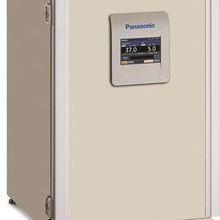In celebration of the company’s 50th year of innovation to the laboratory equipment industry through the Biomedical Division, Panasonic Healthcare Corporation of North America has introduced a new CO2 incubator with an elevated 180?C (355?F) dry heat sterilization cycle. The 5.8 cu.ft. automatic CO2 incubator, model MCO-170AICUVDL-PA, is designed for medical research, pharmaceutical and biotech applications. With the addition of the dry heat incubator, Panasonic Healthcare now offers a complete range of decontamination options to meet any user protocol.
Panasonic Healthcare’s heater design and specialized insulation ensure an energy efficient dry heat sterilization with minimal rise in exterior surface temperature in sterilization mode. This is ideal in a stacked incubator, as the adjacent unit can continue normal operation without interruption to the other. Advanced insulation contains no fiber or powder diffusion.
Precise chamber temperature is achieved with Panasonic Healthcare’s heater jacket system. An advanced dual-filter CO2...
Sterilization is initiated by one-touch control without the need to remove incubator chamber components before the cycle, including the CO2 sensor, UV lamp and fan wheel. The sterilization sequence elevates the chamber temperature to 180?C (355?F) for 1 hour. The total sterilization cycle time is approximately 11 hours including heat up and cool down. An electronic lock prevents entry during the sterilization process.
The incubator includes active and passive contamination control. Located behind the air plenum above the water reservoir, the active SafeCell™ UV lamp decontaminates circulated chamber air, without harming cells, as it passes over the water in the water reservoir. The inCu-saFe® chamber consists of a copper enriched stainless steel alloy interior, which provides the germicidal properties of elemental copper without risk of corrosion or discoloration.
A microprocessor based controller with a color LCD touchscreen provides full access to all operational and alarm functions. A standard USB port allows for convenient transfer of logged data to a PC.
Interested in reading more?
